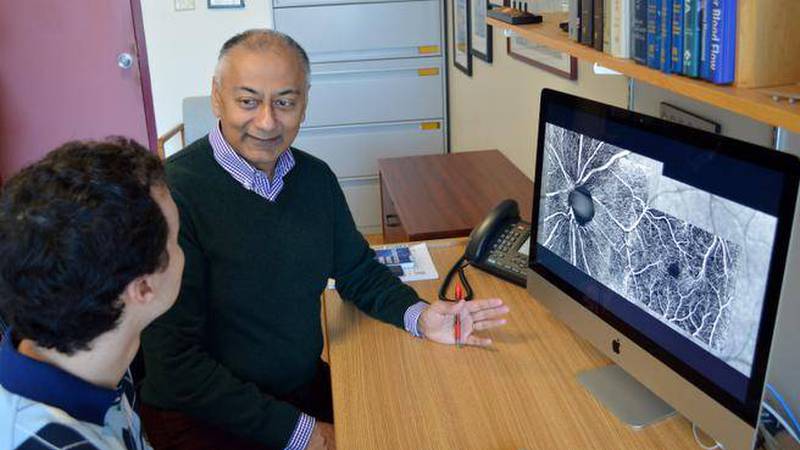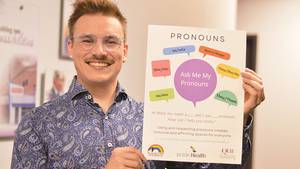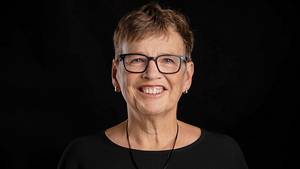Dr. Balwantray Chauhan has spent his entire professional life studying two square millimeters of the human body.
The optic nerve may be tiny, but when glaucoma enters the picture it has a huge impact on the lives of 500,000 Canadians.
“It’s one of the leading causes of non-reversible blindness in the world,” says Dr. Chauhan, research director of the QEII Health Sciences Centre’s Department of Ophthalmology and Visual Sciences. He also holds the Mathers Chair at Dalhousie University.
“The optic nerve is something that’s a millimeter and a half across — and that’s the focus of everything that I do in my work life. And I’m only scratching the surface.”
Dr. Chauhan’s work received high recognition in 2015 when he became only the sixth Canadian to earn the Alcon Research Institute award for outstanding contributions to the field of vision and ophthalmology research.
The recognition comes with a US $100,000 award administered by the QEII Foundation, which contributed an additional $100,000 to Dr. Chauhan’s research program.
Glaucoma affects the optic nerve, which carries signals from the eye to the brain, letting your brain see the world.
“My research centres on: why does the nerve get damaged in glaucoma? What are the ways in which we can best gauge how patients are getting worse or not changing? That of course affects how patients are managed,” he says.
He calls that a “clinical conundrum” that he’s trying to resolve by creating better ways to measure the disease’s progression. “I’m also interested on a more fundamental side on cellular mechanisms behind glaucoma with a view to developing better treatments.”
The doctor says the award is for unrestricted research, meaning he can use the money as he sees fit.
“It’s a bit of a surprise, and it’s something I’m quite proud of,” he says. “It’s not just a little certificate on the wall. It has a really pragmatic value because it comes with a research award.”
The money will flow into all aspects of research, from hiring students, to helping with their training to produce the next generation of scientists. They’ll be seeking ways to improve imaging, which lets health professionals see how the nerve responds to treatment and tracks the disease’s progress.
Dr. Chauhan wants to develop better imaging tools to improve diagnosis and treatment. He’s also leading a global initiative to characterize the healthy optic nerve in people of different ages and ethnicities. This will allow eye doctors to more quickly and effectively diagnose glaucoma to prevent visual disability.
“Imaging is particularly interesting in ophthalmology, because it’s the only place in the brain that you can see neural tissue without actually cutting anything open,” he says. “In the same way that you can see out, we can see in.”
The best patients in the world
Raised in Coventry, England, Dr. Chauhan earned his PhD in visual sciences in 1987. He intended to do a one-year post-doctorate in Vancouver, but that turned into three years. He was on his way back to the U.K. when Raymond LeBlanc, former QEII chief of ophthalmology and professor and head, department of ophthalmology, Dalhousie University, asked him to stop by Halifax.
“Twenty-five years later, I’m still here,” he laughs.
He says his patients are his secret weapons. “We have probably the most dedicated group of patients who are very happy to take part in research, some of them we have followed closely for over 20 years. This is unique anywhere in the world,” he says.
Many patients share his passion for better understanding glaucoma and are enthusiastic research participants. He also has a group of healthy subjects who are being tracked for years, so researchers learn more about how the eye naturally ages. Some drive hours from elsewhere in the Maritimes.
“Without them, this work wouldn’t happen,” he says. “They are remarkably dedicated.”








